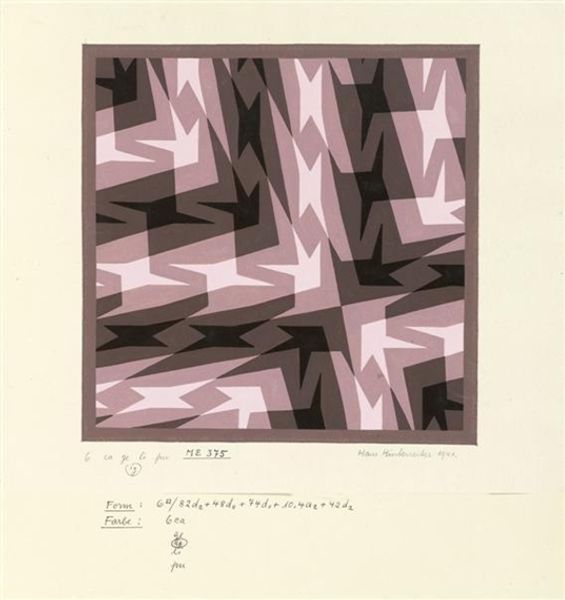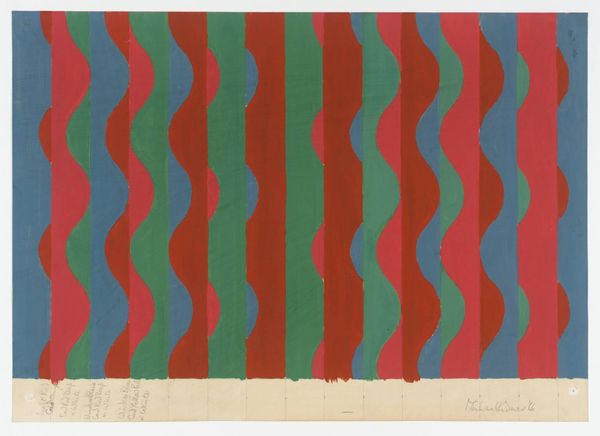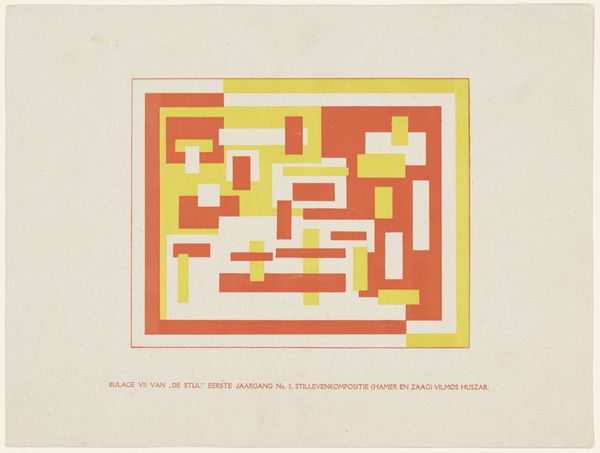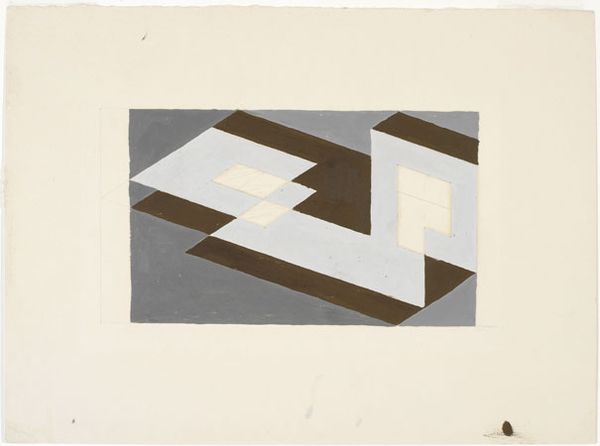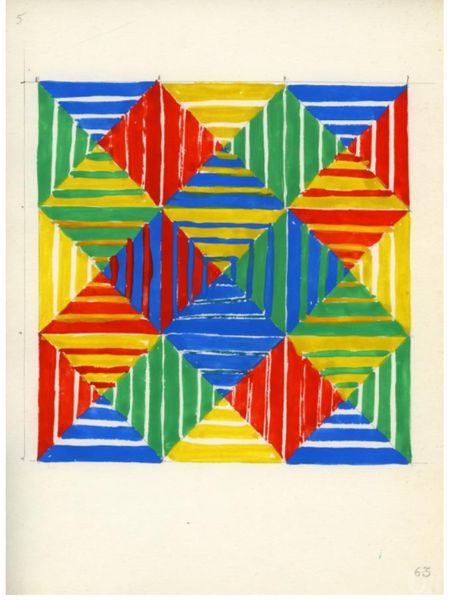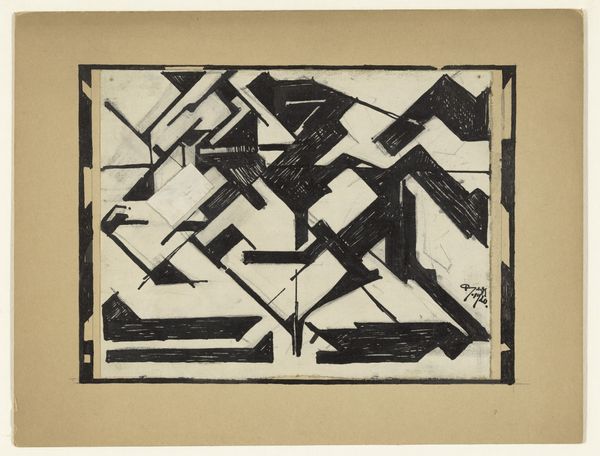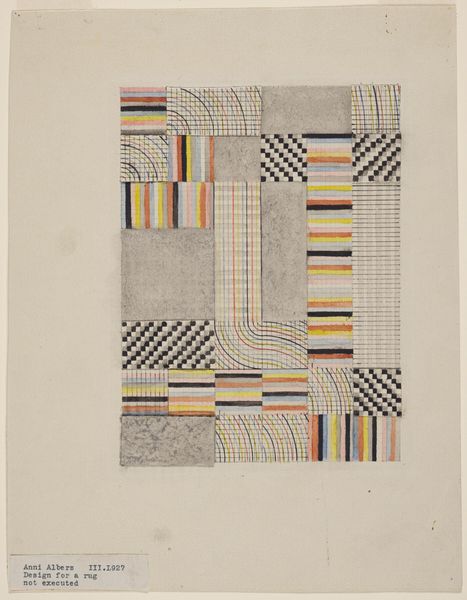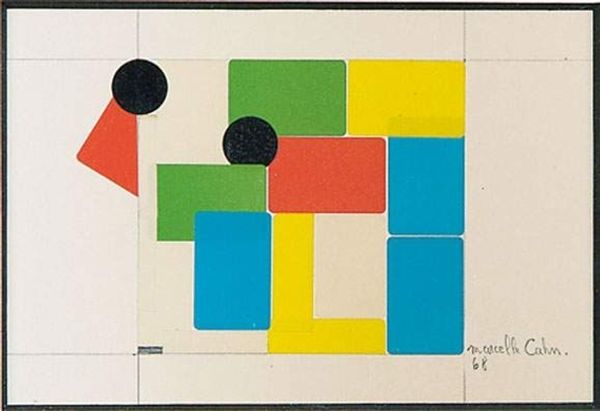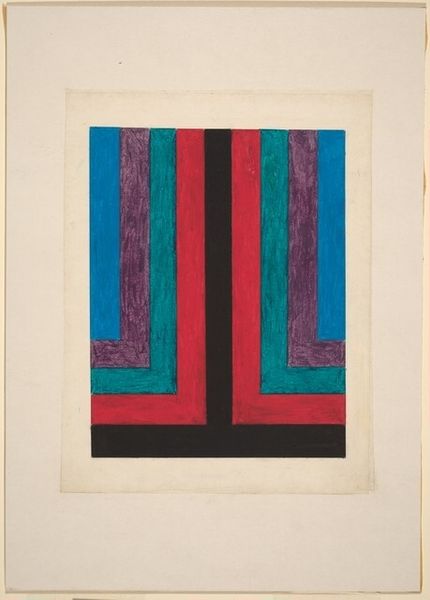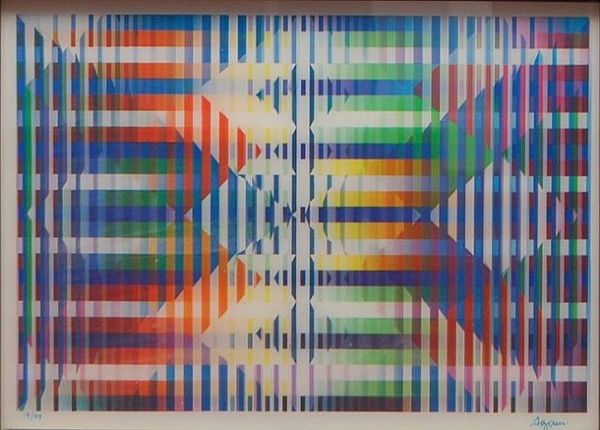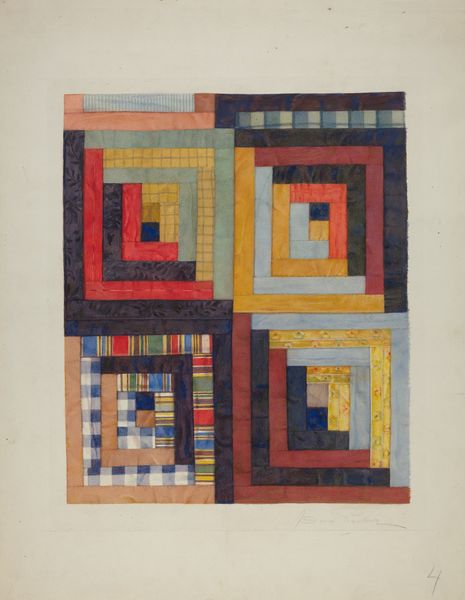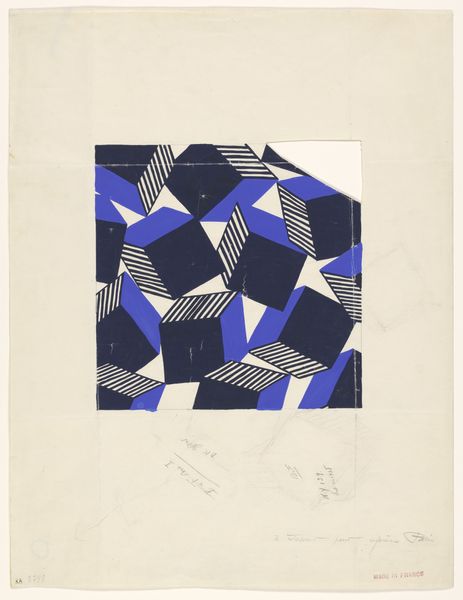
painting, acrylic-paint
#
non-objective-art
#
painting
#
pattern
#
acrylic-paint
#
geometric
#
geometric-abstraction
#
line
#
modernism
Copyright: Hans Hinterreiter,Fair Use
Curator: Looking at Hans Hinterreiter's "Opus 83" from 1958, a symphony of geometric abstraction in acrylic paint, I'm struck by the rigid forms suggesting almost a mathematical puzzle. Editor: It feels a little sterile to me. Like an architectural blueprint devoid of human touch or organic imperfection. But that rigidity has a strange kind of strength, doesn't it? There's a systematic order in the interplay of geometric figures that attracts the eye. Curator: Yes, there is, it is very controlled. This aligns with a certain modernist aspiration toward universality through geometric forms, after all. Hinterreiter often aimed for that, suggesting deeper structures of reality, even. Editor: So, these aren't just shapes; they are part of the order to decode existence itself, huh? Makes me think about social systems as they attempt the same, but with inevitably incomplete results. These clean lines feel utopian. Maybe even dystopian if you imagine living within them… no room for divergence! Curator: Ah, now you’re making me think about my own rigid processes of thinking… Do I allow enough intuitive leaps? Does art need a dose of wild abandon? I feel the tug between that desire for precision, which allows us to communicate and build structures, and that chaotic, beautiful urge to disrupt it all! Editor: Exactly. Like, where's the space for queer interpretation in all this right angled correctness? Do patterns necessarily create order or can they serve as decoys distracting us from chaos seething beneath the surface? I always wonder whose order we're imposing and on whose lives. Curator: It really does become a mirror. Perhaps, this artwork's starkness compels one to consider where precision meets oppression. Maybe beauty lies in challenging boundaries instead of erecting new ones. Editor: Yes, in the questioning. Hinterreiter's patterns feel less like definitive statements and more like an invitation to decode—to continuously redraw lines and see beyond rigid constructions. Curator: To be aware of whose vision we see reflected within its lines... that’s pretty beautiful. Thanks for expanding my vision; let’s explore another perspective.
Comments
No comments
Be the first to comment and join the conversation on the ultimate creative platform.
